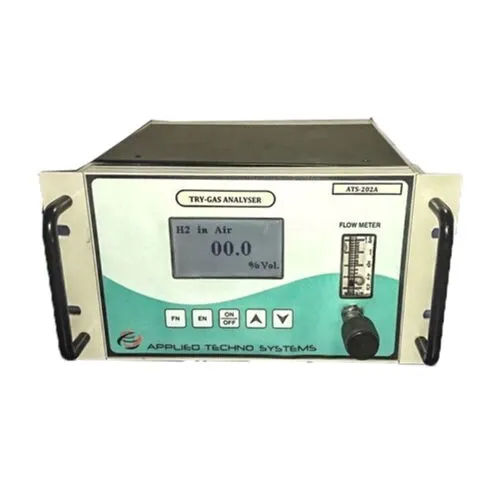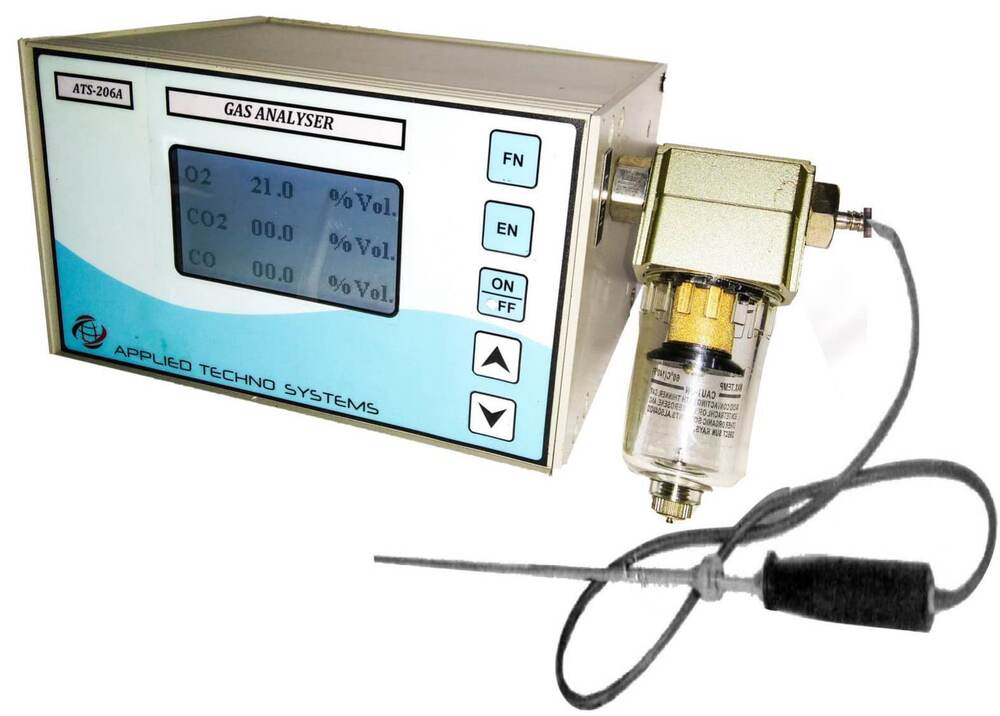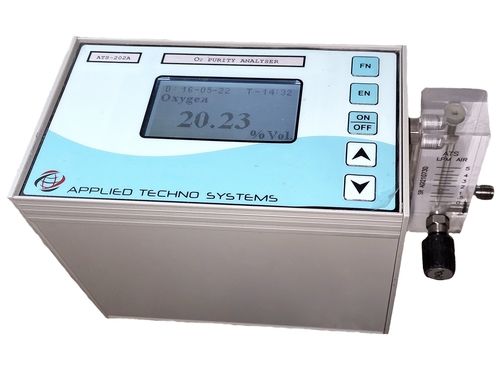- Dew Point Meters
- Gas Analysers
- Portable Gas Detector
- Moisture And Dew Point Analyzer
- Dust/Opacity Monitor
- Gas Monitoring Systems
- Gas Leak Detectors
- Gas Transmitters
- VOC Leak Detector
- Air Quality Monitoring System
- Online Continuous Emission Monitoring System-OCEMS
- Dew Point Monitors
- Gas Detector
- Opacity Monitor
- Portable Flue Gas Analyzer
- Online SOX & NOX Gas Analyzer
- Methane Gas Leak Detector
- Hydrogen Purity Analyzer
- Gas Purity Analyzer
- Effluent Monitoring Systems
- Producer Gas Analyzer
- Gas Detector Calibration Service
- Portable Gas Monitors
- Gas Sensor Transmitter
HCL Dual-Screen Gas Analyzer
Price 1280000 INR/ Unit
MOQ : 1 Unit
HCL Dual-Screen Gas Analyzer Specification
- Humidity
- 0 - 95% RH
- Features
- Auto calibration, data logging, real-time measurement
- Specimen Size
- Customizable
- Frequency
- 50 Hz
- Interface Type
- RS232/Analog
- Measuring Range
- 0 - 1000 ppm
- Temperature
- 0 - 50C
- Accuracy
- 2% of reading
- Automation Grade
- Automatic
- Test Range
- 0 - 1000 ppm
- Number of Specimens
- 2
- Power Supply
- 220 V AC, 50 Hz
- Operating Voltage
- 220 V
- Response Time
- 3 s
- Mounting Type
- Bench-top
- Port Size
- 6 mm
- Application
- Industrial gas detection
- Equipment Type
- Gas Analyzer
- Resolution
- 0.1 ppm
- Gas Pressure
- 0 - 2 MPa
- Max Height
- 350 mm
- Display Type
- Dual LCD Screen
- Usage
- Hydrogen Chloride detection
- Capacity
- Dual channel
- Machine Weight
- 18 kg
- Test Speed
- 0.1 - 30 L/min
- Test Width
- 180 mm
- Test Stroke
- 0 - 500 mm
- Control Mode
- Digital microprocessor
About HCL Dual-Screen Gas Analyzer
| Brand | ATS ( Applied Techno systems) |
| Power Supply | 230 V AC |
| Features | Online Syn Gas Analyzer |
| Analysis Time | <5 Sec |
| Color | Metallic Silver |
| Automation Grade | Automatic |
| Display Type | Graphics Display |
| Model Name/Number | ATS 208A |
| Usage/Application | Process Gas Analysis |
| Product Type | Online |
High-Performance Gas Detection
Built for efficiency and accuracy, the HCL Dual-Screen Gas Analyzer excels in industrial environments. Its electrochemical sensor delivers quick responses (3 seconds), measuring HCl concentrations ranging from 0 to 1000 ppm with high precision. Automated features, real-time measurement, and a robust build ensure reliability for a variety of gas monitoring applications.
User-Friendly and Flexible Operation
The analyzers digital microprocessor control simplifies operation and allows user calibration via a built-in routine. On-board memory and external transfer capabilities make data management straightforward, while the dual LCD screens ensure clear visibility of key parameters during testing and routine monitoring.
Advanced Safety and Compliance
With CE certification and ISO 9001:2015 compliance, the gas analyzer meets essential safety and quality benchmarks. The audio-visual alarm system promptly alerts users if gas levels exceed preset safety limits, contributing to safer working environments. Its IP54 rating further guards against dust and moisture ingress.
FAQs of HCL Dual-Screen Gas Analyzer:
Q: How does the HCL Dual-Screen Gas Analyzer detect hydrogen chloride in industrial environments?
A: The analyzer uses an electrochemical sensor to accurately measure hydrogen chloride (HCl) levels, with a detection range of 0 to 1000 ppm. The instrument operates either via diffusion or with an optional pump-aspirated system, adapting to varied sampling needs.Q: What are the primary benefits of the audio-visual alarm function?
A: The audio-visual alarm provides immediate alerts whenever HCl concentrations exceed preset safety limits. This dual-notification system helps ensure swift response to dangerous conditions, supporting workplace safety protocols.Q: When is calibration required, and how is it performed?
A: Calibration should be performed regularly or whenever accuracy needs to be verified. The analyzer features a user-calibratable, built-in routine, allowing users to initiate and complete calibration directly through the devices interface, ensuring consistent performance.Q: Where can data from the analyzer be stored and accessed?
A: Data is logged on onboard memory and can be transferred externally for further review or analysis. Supported communication protocols (Modbus, RS232/Analog) facilitate integration with industrial data management systems.Q: What is the process for setting up the analyzer for operation?
A: Installation involves mounting the bench-top device, connecting to a 220 V AC power supply, and configuring the sampling method (diffusion or pump-aspirated). User settings such as test range, stroke, and calibration can be managed via the digital microprocessor interface.Q: How is the analyzer adapted for different specimen sizes and sample needs?
A: The equipment supports testing up to two specimens simultaneously with customizable specimen sizes and test parameters (width, stroke, speed), offering flexible testing for various industrial applications.Q: What benefits does compliance with CE and ISO 9001:2015 offer?
A: Compliance ensures the analyzer aligns with international standards for safety, quality, and reliability. It provides assurance for manufacturers, suppliers, and end users that the product undergoes rigorous testing and meets regulatory requirements.
Tell us about your requirement

Price:
Quantity
Select Unit
- 50
- 100
- 200
- 250
- 500
- 1000+
Additional detail
Mobile number
Email
More Products in Gas Analysers Category
Gas Measurement Devices
Price 32500 INR / Unit
Minimum Order Quantity : 1 Unit
Usage : Industrial
Power Supply : Rechargeable Battery With Charger
Humidity : < 85%RH
Tri Gas/ Turbine gas analyzer
Price 325000 INR / Unit
Minimum Order Quantity : 1 Unit
Usage : Industrial
Power Supply : Electric
Material : Mild Steel
Humidity : 85%RH
Flue Gas Analyser
Price 185000 INR / Unit
Minimum Order Quantity : 1 Unit
Usage : Industrial
Power Supply : Electric
Material : MS
Portable Hydrogen Purity Analyzer
Price 40000 INR / Number
Minimum Order Quantity : 1 Number
Usage : Industrial
Power Supply : Electric
Material : Aluminium
Humidity : 85%RH

 Send Inquiry
Send Inquiry





 English
English Spanish
Spanish French
French German
German Italian
Italian Chinese (Simplified)
Chinese (Simplified) Japanese
Japanese Korean
Korean Arabic
Arabic Portuguese
Portuguese